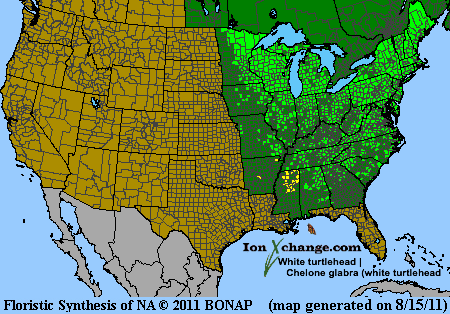 Loading... Please wait...
Loading... Please wait...- Home
- SEEDS
- SEED MIXES
- BUY PLANTS
- Info Request
-
Educational Videos
- Greenhouse Transplanting Demonstration
- Native Seed Cleaning demonstration at Ion Exchange Native Seed and Plant Nursery
- Attracting Butterflies
- Bidens - Bidens cernua Harvest Video
- Big Blue Stem Harvest
- Butterfly Milkweed Video
- Button Blazingstar - Liatris aspera Video
- Buttonbush - Cephalanthus occidentalis Video
- Canada Anemone - Anemone canadensis Harvest Video
- Cardinal Flower - Lobelia cardinalis Video
- Control Burn - Wildflower Field
- Cream Gentian - Gentiana flavida
- Culver's Root - Veronicastrum virginicum Video
- Cup Plant - Silphium perfoliatum Video
- Dormant Seeding | Planting
- Earthyman's Favorite Wildflowers Video
- Eco-Friendly Golf Course Seed Mix
- Floating Islands
- Fringed Loosestrife - Lysimachia ciliata Video
- Giant Yellow Hyssop - Agastache nepetoides Video
- Indiangrass - Sorghastrum nutans Video
- Iowa Prairie Partner Program
- Leadplant - Amorpha canescens (Potted) Video
- Meadow Blazingstar - Liatris ligulistylis
- Midland Shooting Stars - Dodecatheon meadii Video
- Native Plant Nursery Field Irrigation Experiment
- Nodding Onion - Allium cernuum Video
- Ohio spiderwort - Tradescantia ohiensis Video
- Old Man's Beard - Clematis virginiana blooms Video
- Oxeye Sunflower - Heliopsis helianthoides Video
- Prairie Spiderwort - Tradescantia bracteata
- Purple Coneflower - Echinacea purpurea Video
- Rain Garden or Water Garden Video
- Rattlesnake Master - Eryngium yuccifolium Video
- Riverbank Stabilization - Wetland Plants
- Rose Mallow - Hibiscus militaris Video
- Rosinweed - Silphium integrifolium Video
- Royal Catchfly - Silene regia
- Showy Tick Trefoil - Desmodium canadense Video
- Sneezeweed - Helenium autumnale Video
- Swamp Betony - Pedicularis lanceolata Video
- Swamp Milkweed - Asclepias incarnata Video
- Sweet Blackeyed Susan - Rudbeckia subtomentosa Video
- Tall Coreopsis - Coreopsis tripteris Video
- Urban Butterfly Garden
- Wild Bergamot - Monarda fistulosa Video
- Wild Geranium - Geranium maculatum Harvest
- Wild Goldenglow - Rudbeckia lanciniata Video
- Wild Petunia - Ruellia humilis Harvest Video
- Woodland Knotweed - Polygonum virginianum Video
- Yellow Coneflower - Ratibida pinnata Video
- Blog
- Resources
- Policies
Contact Us
Phone:
563-419-0837
or 563-535-7231
Email:
hbright@ionXchange.com
Browse Products
Add to Wish List
You Recently Viewed...
Our Newsletter
Product Description
Turtlehead, Balmony, Bitter Herb, Codhead, Fish Mouth, Shellflower, Snakehead, Snake Mouth, Turtlebloom
Chelone from the Greek for tortoise and glabra from the Latin word meaning smooth, referring to lack of hairs or texture on the stems and leaves.
White Turtlehead is found throughout the Tallgrass region along streams, in fens and in seeps. It also will establish itself in woodland bottomlands. Turtlehead blooms from August through September and grows from a creeping perennial rootstock to a height of three feet under ideal conditions.
Even though it has a very bitter taste, Turtlehead providided Native Americans a favorite tonic and laxative. Early settlers used the leaves to make a tonic to aid in curing jaundice, constipation and internal parasites. The leaves were also made into a salve to relieve itching and inflammation.
| Sun Exposure | Prairie |
| Soil Moisture | Wet, Wet Mesic, |
| Bloom Time |
Summer, Fall |
| Bloom Color | Cream |
| Max Height | 5 feet |
| Wetland Code | OBL |
| Germ Code | C(120) or M |
| Seeds Per Packet | 300 |
| Seeds Per Ounce | 92,000 |
Edible Uses: Unknown
Medicinal Uses: Balmony is a very bitter herb with a tea-like flavour that acts mainly as a tonic for the liver and digestive system. It has long been held in esteem in N. American folk medicine, though it has never been investigated scientifically. The herb also has anti-depressant and laxative effects. A decoction of the whole herb is antibilious, aperient, appetizer, cathartic, cholagogue, detergent, tonic, vermifuge. It is used internally in the treatment of consumption, debility, diseases of the liver, gallbladder problems, gallstones etc. It is also used to relieve nausea and vomiting, intestinal colic and to expel worms. Its tonic effect upon the digestive system has made it of benefit in the treatment of anorexia nervosa. Externally, it is applied as a soothing ointment to piles, inflamed tumours, irritable ulcers, inflamed breasts etc. The plant is harvested when in flower and is dried for later use.
Herbal Uses: See Micidinal







